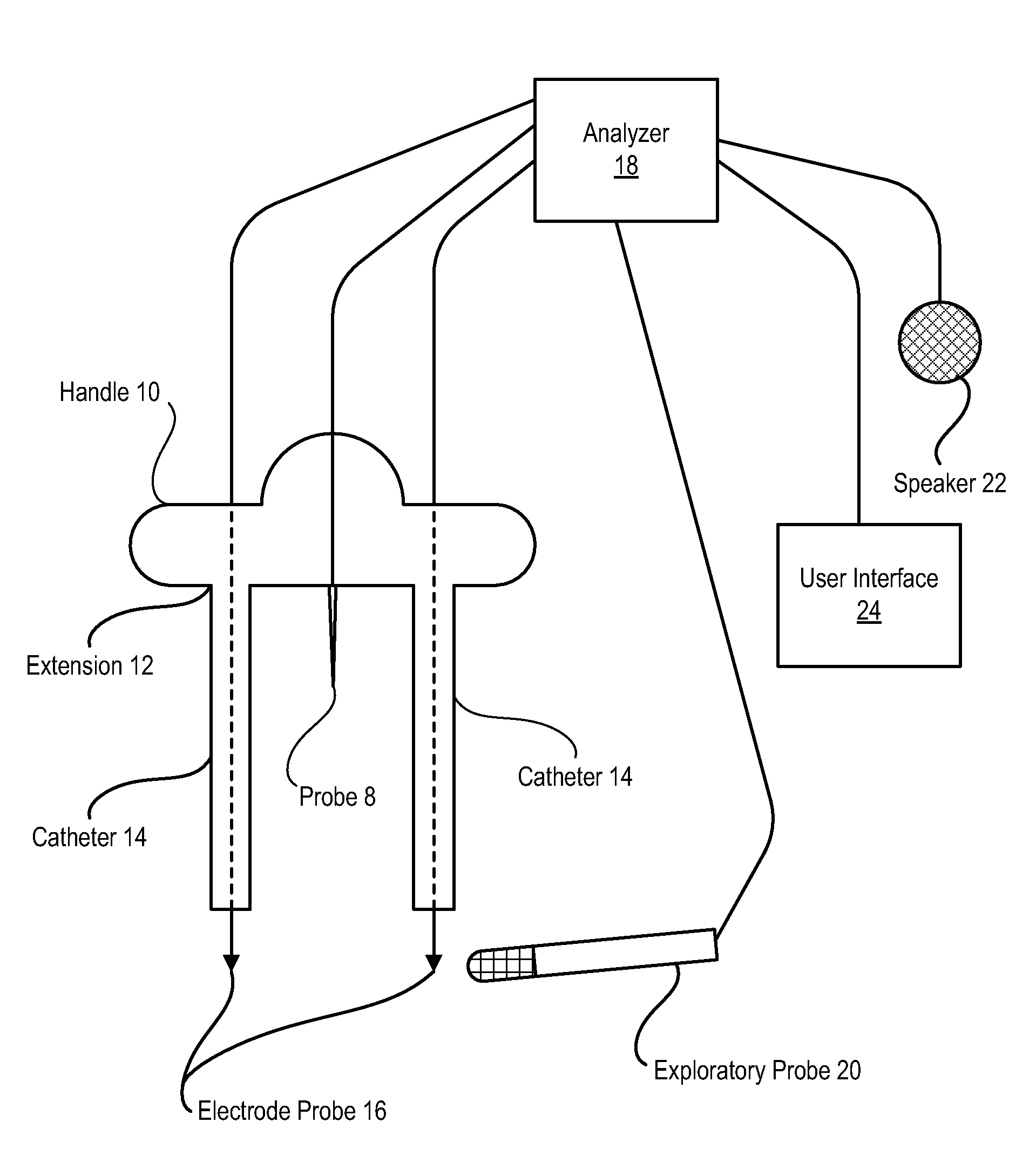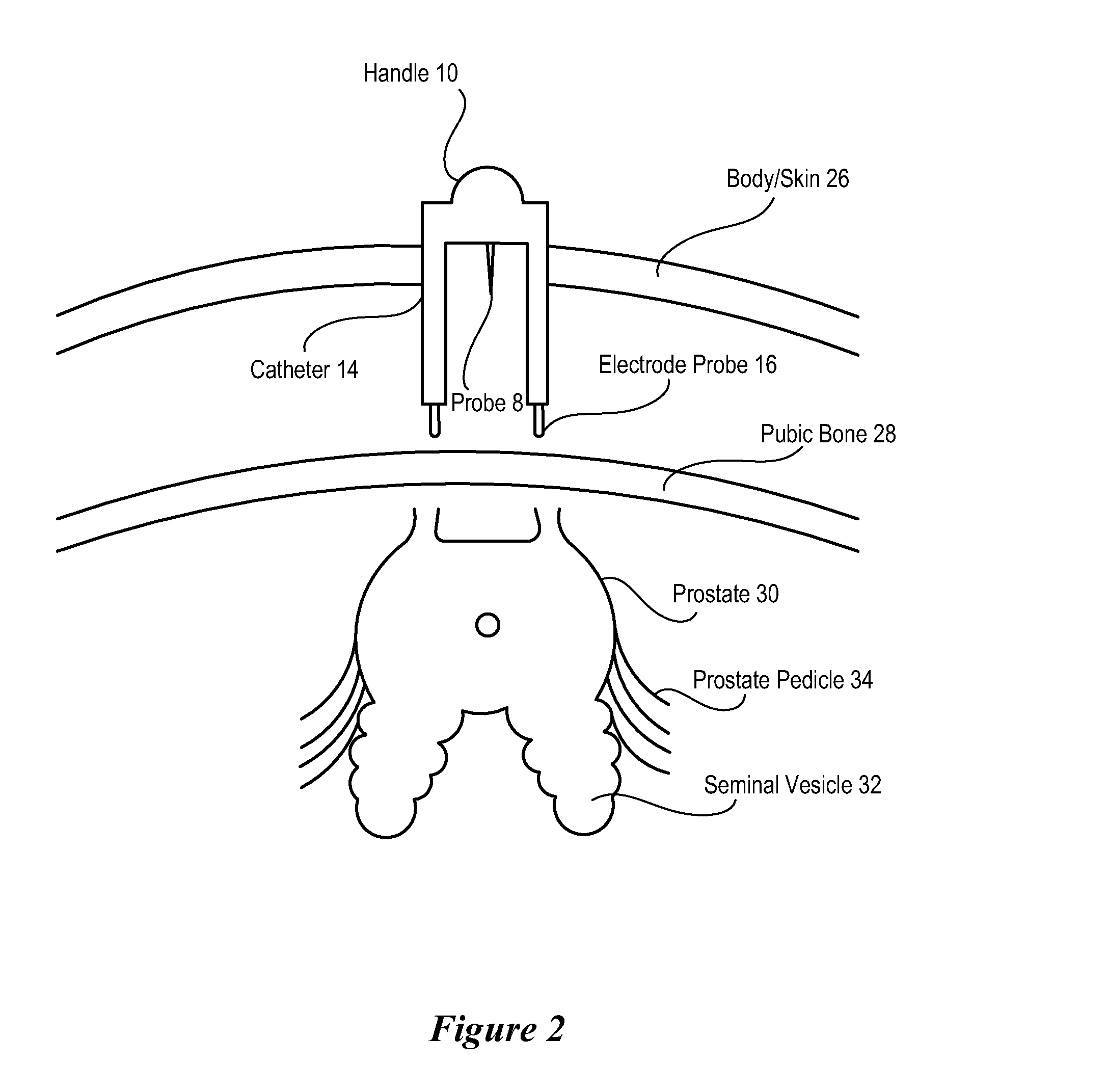System and Method for Laparoscopic Nerve Detection
a technology for internal nerves and systems, applied in the field of laparoscopic surgery, can solve the problems of inability to detect internal nerves, etc., and achieve the effect of reducing disadvantages and problems, rapid and precise system and method, and reducing the risk of internal nerve damag
- Summary
- Abstract
- Description
- Claims
- Application Information
AI Technical Summary
Benefits of technology
Problems solved by technology
Method used
Image
Examples
Embodiment Construction
[0017]Selectively applying electrical current through a nerve within a body cavity allows a surgeon to map the position of the nerve's pathway through the body cavity. By having an approximate map of the nerve pathway, the surgeon is able to dissect regions of the body near the nerve with a reduced risk of damage to the nerve. Thus, for instance, cancerous portions of the body are surgically removed by selecting dissection points as distal to the nerve as is practical. One example of a dissection presented below is the dissection of a prostate gland from within the abdominal cavity using laparoscopic or robotic techniques. Identification of the neurovascular bundle (NVB) that supports erectile function helps to preserve those nerves that support erectile function after removal of the prostate gland. Repeated probing along the presumed pathway of the NVB proximate to the prostate gland maps the approximate location of the NVB, allowing the surgeon to select dissection points that red...
PUM
 Login to View More
Login to View More Abstract
Description
Claims
Application Information
 Login to View More
Login to View More - R&D
- Intellectual Property
- Life Sciences
- Materials
- Tech Scout
- Unparalleled Data Quality
- Higher Quality Content
- 60% Fewer Hallucinations
Browse by: Latest US Patents, China's latest patents, Technical Efficacy Thesaurus, Application Domain, Technology Topic, Popular Technical Reports.
© 2025 PatSnap. All rights reserved.Legal|Privacy policy|Modern Slavery Act Transparency Statement|Sitemap|About US| Contact US: help@patsnap.com



